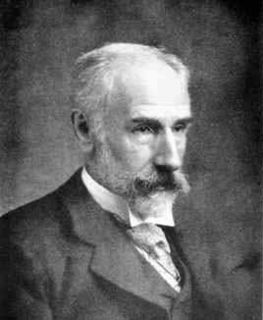
Maria Edgeworth was a prolific Anglo-Irish writer of adults' and children's literature. She was one of the first realist writers in children's literature and was a significant figure in the evolution of the novel in Europe. She held advanced views, for a woman of her time, on estate management, politics and education, and corresponded with some of the leading literary and economic writers, including Sir Walter Scott and David Ricardo.
In economics and commerce, the Bertrand paradox — named after its creator, Joseph Bertrand — describes a situation in which two players (firms) reach a state of Nash equilibrium where both firms charge a price equal to marginal cost ("MC"). The paradox is that in models such as Cournot competition, an increase in the number of firms is associated with a convergence of prices to marginal costs. In these alternative models of oligopoly, a small number of firms earn positive profits by charging prices above cost. Suppose two firms, A and B, sell a homogeneous commodity, each with the same cost of production and distribution, so that customers choose the product solely on the basis of price. It follows that demand is infinitely price-elastic. Neither A nor B will set a higher price than the other because doing so would yield the entire market to their rival. If they set the same price, the companies will share both the market and profits.
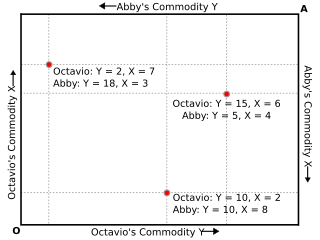
In economics, an Edgeworth box, named after Francis Ysidro Edgeworth, is a way of representing various distributions of resources. Edgeworth made his presentation in his book Mathematical Psychics: An Essay on the Application of Mathematics to the Moral Sciences, 1881. Edgeworth's original two-axis depiction was developed into the now familiar box diagram by Pareto in his 1906 book "Manual of Political Economy" and was popularized in a later exposition by Bowley. The modern version of the diagram is commonly referred to as the Edgeworth–Bowley box.
Edgeworth's limit theorem is an economic theorem created by Francis Ysidro Edgeworth that examines a range of possible outcomes which may result from free market exchange or barter between groups of people. It shows that while the precise location of the final settlement between the parties is indeterminate, there is a range of potential outcomes which shrinks as the number of traders increases.
Sir Arthur Lyon Bowley was an English statistician and economist who worked on economic statistics and pioneered the use of sampling techniques in social surveys.
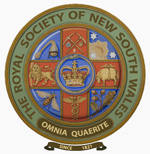
The Royal Society of New South Wales is a learned society based in Sydney, Australia. It is the oldest such society in Australia and in the Southern Hemisphere. The Governor of New South Wales is the vice-regal patron of the Society.

Richard Lovell Edgeworth was an Anglo-Irish politician, writer and inventor.
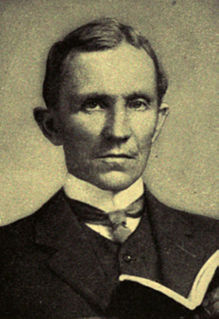
Sir Tannatt William Edgeworth David, professionally known as Edgeworth David, was a Welsh Australian geologist and Antarctic explorer. A household name in his lifetime, David's most significant achievements were discovering the major Hunter Valley coalfield in New South Wales and leading the first expedition to reach the South Magnetic Pole. He also served with distinction in World War I.
In economics, the Edgeworth conjecture is the idea, named after Francis Ysidro Edgeworth, that the core of an economy shrinks to the set of Walrasian equilibria as the number of agents increases to infinity.

Robert "Robin" John Tillyard FRS was an English–Australian entomologist and geologist.
Belinda is an 1801 novel by the Irish writer Maria Edgeworth. It was first published in three volumes by Joseph Johnson of London, and was reprinted by Pandora Press in 1986. The novel was Edgeworth's second published, and was considered controversial in its day for its depiction of an interracial marriage.
Peter Kenneth Newman was an English economist and historian of economic thought. He helped to edit The New Palgrave: A Dictionary of Economics, to which he contributed several articles.
Mathematical economics is the application of mathematical methods to represent theories and analyze problems in economics. By convention, these applied methods are beyond simple geometry, such as differential and integral calculus, difference and differential equations, matrix algebra, mathematical programming, and other computational methods. Proponents of this approach claim that it allows the formulation of theoretical relationships with rigor, generality, and simplicity.
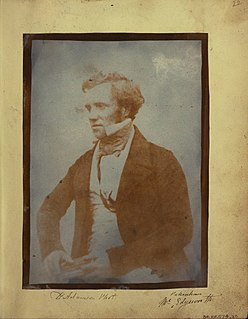
Michael Pakenham Edgeworth was an Irish botanist who specialized in seed plants and ferns, and spent most of his life working in India. He was also a pioneer of photography.
A hedonometer or hedonimeter is a device used to gauge happiness or pleasure. Conceived of at least as early as 1880, the term was used in 1881 by the economist Francis Ysidro Edgeworth to describe "an ideally perfect instrument, a psychophysical machine, continually registering the height of pleasure experienced by an individual."
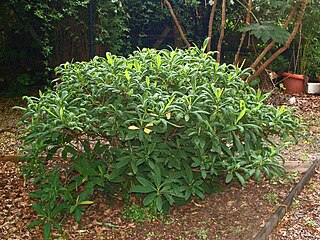
Edgeworthia chrysantha is a plant in the family Thymelaeaceae.
Edgeworth is an English toponymic surname. It probably derives from Edgeworth in Gloucestershire, but the name is long established in Ireland, where it is claimed that the family settled in County Longford in 1583.
Frances Anne Edgeworth (1769–1865), known as Fanny, was an Irish botanical artist and memoirist. She was the stepmother and confidant of the author Maria Edgeworth.
